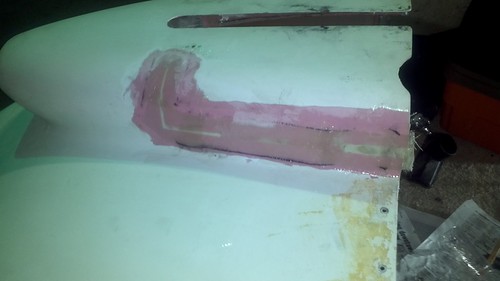lostpilot28
Well Known Member
I spent the better part of last night reading the multitude of threads here on VAF regarding inlet/outlet size ratio in regards to improving cooling drag and lowering CHT and Oil temps. I also spent a lot of time recently researching getting a larger oil cooler. I'm beginning to think that a larger oil cooler may not help me.
My "problems" are slightly high CHTs (typically around 385 degrees cruising at around 170 mph TAS, in 83 (F) OAT). I also suffer from "high side of normal" Oil Temps around 215 (F) which creep up to the high 220's if I increase the power setting. If it's hotter outside things start getting even warmer under the cowl.
One thing I noticed that makes me think my cooling problem is related to my exit airflow being too small is that I can see a very small amount of oil exiting the side of the cowl by the upper/lower cowl seam. I guess this is the only silver lining I'll get for having a slight oil weep...but it appears to indicate that my exit air is not sufficiently large, and my bottom-half of the cowl pressure may be too high. Now I'm thinking about louvers instead of a bigger oil cooler. I'd really hate to cut into my nicely painted cowl for something that may not work, though!
There's so much information on these related topics it's pretty tough to figure out which direction to start in. I considered removing the upper intersection fairing to increase the exit airflow, but I don't know if that's a good place to start troubleshooting. I'm appreciative of any suggestions on where to start.
My setup is an RV-7A, ECI 0-360, carbed, Catto 3-blade prop, Sam James cowl and Plenum, dual P-mags, piston skirt squirters, Niagra 20002A oil cooler. My temps aren't horrible, but I'd like to lower them a bit if possible.
My "problems" are slightly high CHTs (typically around 385 degrees cruising at around 170 mph TAS, in 83 (F) OAT). I also suffer from "high side of normal" Oil Temps around 215 (F) which creep up to the high 220's if I increase the power setting. If it's hotter outside things start getting even warmer under the cowl.
One thing I noticed that makes me think my cooling problem is related to my exit airflow being too small is that I can see a very small amount of oil exiting the side of the cowl by the upper/lower cowl seam. I guess this is the only silver lining I'll get for having a slight oil weep...but it appears to indicate that my exit air is not sufficiently large, and my bottom-half of the cowl pressure may be too high. Now I'm thinking about louvers instead of a bigger oil cooler. I'd really hate to cut into my nicely painted cowl for something that may not work, though!
There's so much information on these related topics it's pretty tough to figure out which direction to start in. I considered removing the upper intersection fairing to increase the exit airflow, but I don't know if that's a good place to start troubleshooting. I'm appreciative of any suggestions on where to start.
My setup is an RV-7A, ECI 0-360, carbed, Catto 3-blade prop, Sam James cowl and Plenum, dual P-mags, piston skirt squirters, Niagra 20002A oil cooler. My temps aren't horrible, but I'd like to lower them a bit if possible.











